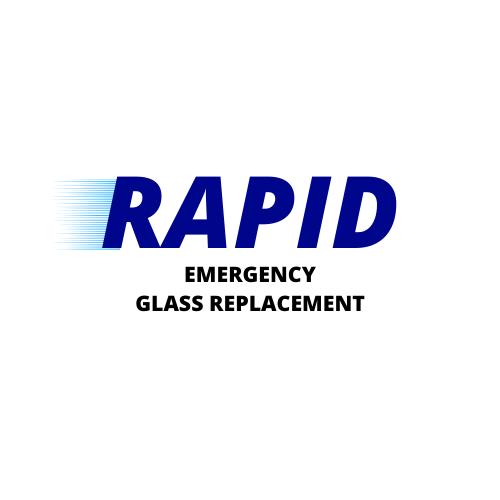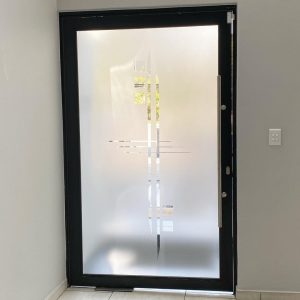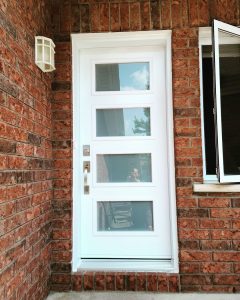Most living and working spaces will have windows to let in the natural light and for purposes of creating ventilation.
While this does serve its purpose, often it leads to loss of privacy. To take care of this problem, people use curtains, blinds and shades, adding to the expense and maintenance costs. Technology has brought in smart glass that allows you to be in control of the amount of light passing through. A much simpler way of increasing the level of privacy, and prevent people from seeing inside your room, is to use frosted glass, instead of plain glass.
What is Frosted Glass
Frosted glass is plain glass that has been rendered a degree of opaqueness and translucency, that still allows light to come through, but will not allow a view of the inside to any great extent. This opaqueness is obtained through sandblasting or using an acid to etch the glass. This scatters the light being transmitted, the glass becomes translucent and obscures the view, while still allowing light to go through. This same effect is also possible through the use frosted glass sprays or by putting a film of vinyl on the glass.
Frosted glass can be permanently frosted, temporarily frosted, or given an ultra fine frosting. The type of frosting used will depend on the use of the frosted glass. Frosted glass can even be made with decorative designs that allows such glass to be used in bedrooms as a part of the decor. It is of great use for bathroom windows, attics and libraries. Its use in windows of offices can help reduce distraction while allowing in light. It is also possible to get glass that is frosted only partially, often the lower portion, while the higher portion is left clear. The sandblasting or acid etching used for making frosted glass does make one side of the glass pitted, and this pitting blurs the images and scatters the light, making the glass translucent.
The History of Frosted Glass
Frosted glass was first created during the Victorian era and earliest frosted glass used acids to etch the glass in different hues of while and other shades to decorate windows, and was referred to as French embossing of glass, pointing to the process having originated in France. This led to very opulent and decorative windows that also addressed its concerns for privacy. Since then, frosted glass, as been used as an interior decorative option that is highly functional.
Benefits of Frosted Glass
Frosted glass increases the degree of privacy, while allowing the transmission of light, and reducing any need for artificial lighting. It can make for a great alternative to curtains and drapes, especially in bathrooms. You can get this glass in different colours and designs giving it an aesthetic appeal besides its functionality. It does not require much of maintenance other than regular cleaning, and greatly reduces glare.
What is the difference between etched and frosted glass?
Etching alters the surface of the glass to create artwork, while frosting only makes the glass translucent instead of transparent. Frosting can also be used to create patterns, and both these types of glasses have practical uses that can improve aesthetics.

Rapid Emergency Glass Replacement are the glass replacement specialists in Sydney for windows, doors & shopfronts


